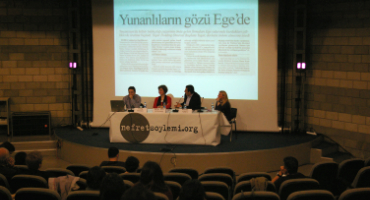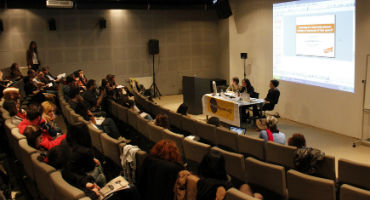Within the scope of Media Watch on Hate Speech Project implemented by the Hrant Dink Foundation, the media watch report covering the period September-December 2013 has been released in two sections. The first section, written by Idil Engindeniz, is based on ethnic and religious identities along with content targeting LGBTI individuals and women.
Increase in the number of hate speech containing items
In this period, a considerable increase in the number of incidences of hate speech has taken place compared to the other periods of the same year. Although there are a variety of topics through which hate speech is generated; an increase in the number of news items which appear in conservative press due to Christmas season and which target Christians as well as an increase in the number of writings criticizing the proposed law on hate crimes were observed.
As in previous periods Jewish, Armenian and Christian population constituted the most frequent targets of hate speech. Hate speech targeted the Jewish and Armenian population most often during this period. These three groups are followed by Kurds, Greeks and non-Muslims.
Among the 25 items analysed under the title “Other Disadvantaged Groups” where hate speech items towards women and LGBTI individuals were examined, 15 items contain hate speech towards (male and female) homosexual individuals. Hate speech towards transgender individuals, described as “transvestites” in the items, are found in four items and hate speech towards women is detected eight times within the period and publications observed.
In the report written by Nil Mutluer, under the title of Discriminatory Discourse in Print Media: The Alevi File, considering Alevi-related events that appeared in the media Birgün, Habertürk, Hürriyet, Milliyet, Özgür Gündem, Star, Sözcü, Yeni Şafak, Yurt and Zaman newspapers were analysed.
News making intended for different audiences may reproduce hate speech in the same way
Mosque-cemevi project, Tuzluçayır Protests, Abant Platform Meeting on the Alevi Initiative were analysed to understand the discriminative language by newspapers which have different editorial policies. Additionally, in these newspapers, the news items published on the police investigation held in the neighborhood of Hasan Fırat Gedik following his funeral, the Abant Platform meeting, Syrian Alevis, Sakine Cansız and faith, historical developments and political relations were also analysed.
The newspapers that contained the most news articles or opinion columns supporting the mosque-cemevi project were Yeni Şafak, Zaman, Star and Habertürk, in decreasing order. Other newspapers that contained the most news articles or opinion columns that criticized the project were Özgür Gündem, Birgün, and Yurt. Presenting different opinions on the subject, after having reported on it with a neutral tone, Milliyet and Hürriyet did not appear to have any agenda for channeling people’s opinions. And it was observed that Sözcü put the mosque-cemevi project on its agenda to criticize the government and not to give voice to Alevis’ opinions. It was also detected that the mosque-cemevi project and the Tuzluçayır protests which were opposing the project, were covered under the same titles in the newspapers.
We observed the fact that even if newspapers maintain different stances about the project, when the news items printed in Zaman, Yeni Şafak and Star involving protestors are evaluated in comparison with the approach taken by Özgür Gündem towards the Alevi actors that embrace the project, it can be observed that polarizing and discriminatory discourse is generated in a similar manner in these newspapers.
In addition, the findings indicate that these newspapers would prefer to portray Alevis as “people who only protest and have a suspicious faith”, unless an Alevi related issue is handled by someone who holds opinions close to theirs.
Finally, the analysis of visual items was added to the report as it is significant in terms of how discriminatory discourse against Alevis is generated in an explicit or implicit way.
Please click here to read the other reports.



